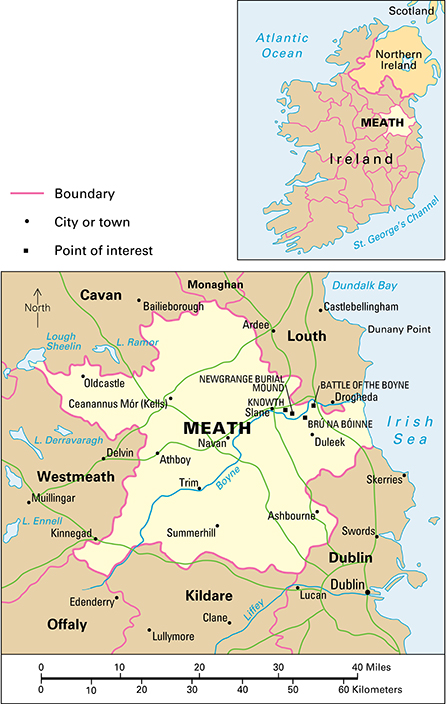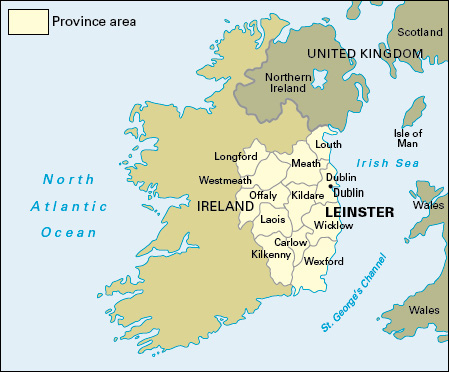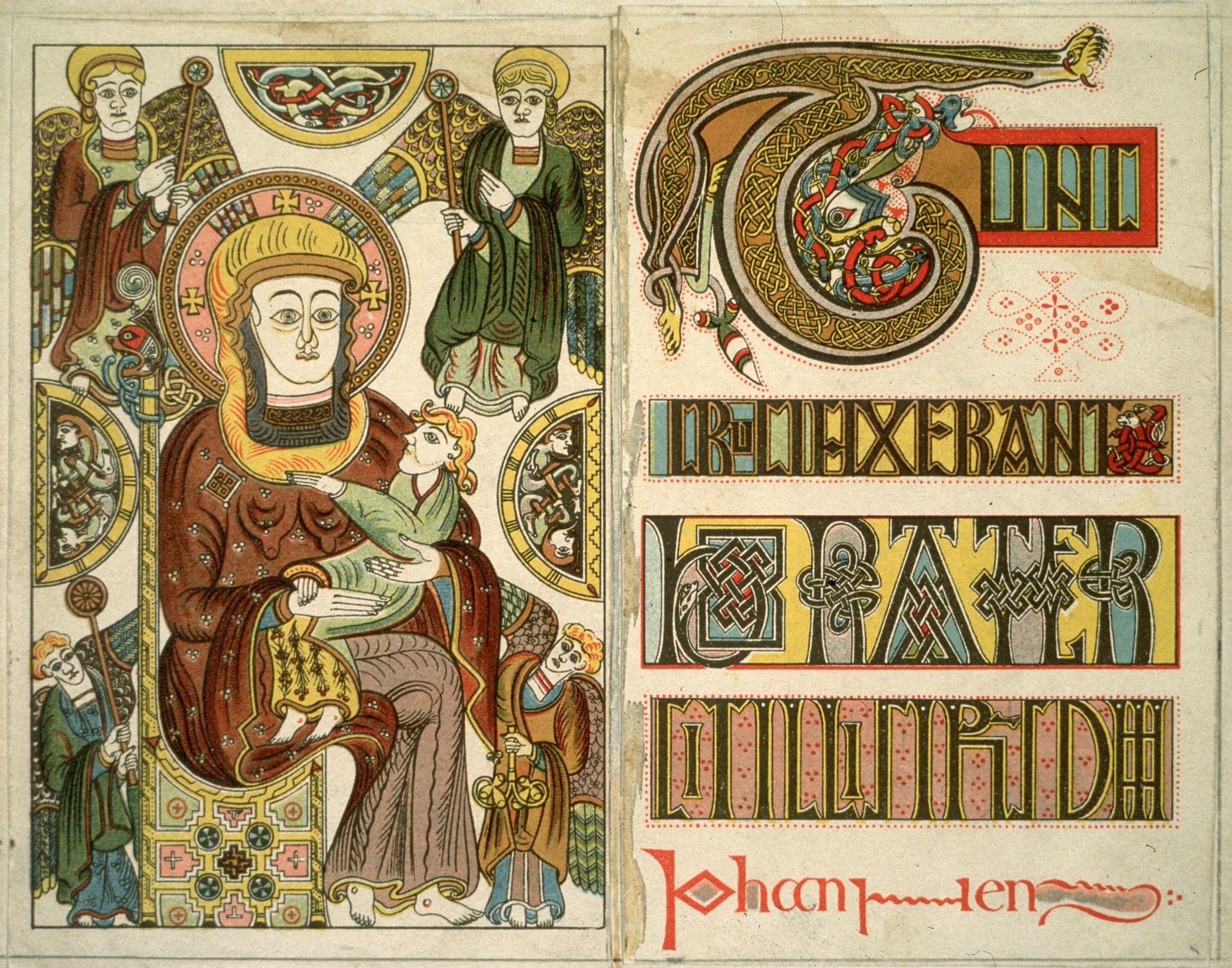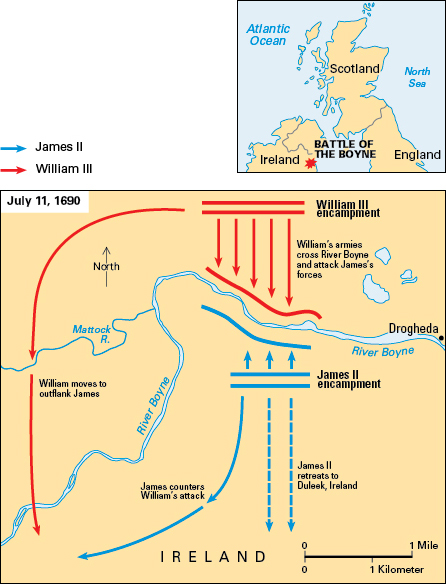Meath, County, lies in the province of Leinster in Ireland, also called the Republic of Ireland. It covers an area of 903 square miles (2,338 square kilometers) northwest of Dublin in northeastern Ireland. County Meath has rich grazing lands. Its principal town is Navan. The county is known as Royal Meath because during Celtic times, the high kings of Ireland had their seat at Tara (see History of Ireland [The Iron Age and Celtic culture]).


Most of the population of County Meath is Roman Catholic. Most of the rest of the people belong to the Church of Ireland or Eastern Orthodox Churches, or claim no religious affiliation. English is the everyday language of nearly all the people in County Meath. There are two small Gaeltacht areas—that is, areas where many of the inhabitants speak Irish.
Beef cattle production is the leading type of farming in County Meath. Farmers fatten cattle from southern and western Ireland on the county’s fertile land. Dairy farms supply milk to Dublin and to Irish creameries elsewhere. The county also has a number of farms for breeding horses. The chief crops include barley, oats, potatoes, vegetables, and wheat.
Navan is the major industrial center in County Meath. Manufactured products of the county include chemicals, electronic equipment, food and beverage products, insulation, and machinery. One of the world’s largest lead and zinc mines has operated in Navan since the 1970’s.
County Meath is a rolling lowland that rises to hills more than 500 feet (150 meters) high along its northern borders. The River Boyne and its tributary the Blackwater drain much of the county. The county’s short, low coastline along the Irish Sea has several sandy beaches.
Ireland’s most famous prehistoric structure is the Newgrange burial mound, built more than 5,000 years ago. Along with other graves at Dowth and Knowth, it is part of a remarkable Stone Age and Bronze Age cemetery on the banks of the Boyne.

What is now County Meath once formed part of a larger kingdom called Meath. The hill of Tara, near Navan, was the residence of the high kings of Ireland. Saint Columba, also known as Saint Colmcille, founded a monastery at Kells. The illuminated (decorated) manuscript called the Book of Kells may have been written at the monastery between the mid-700’s and early 800’s.

In the 1170’s, King Henry II of England gave County Meath to Hugh de Lacy, an Anglo-Norman nobleman. De Lacy built many castles, one of the largest being the fine medieval castle at Trim. Kells, Navan, and Trim were Anglo-Norman towns. When English influence declined elsewhere in Ireland, eastern County Meath remained within the Pale, the area around Dublin under English control. The Battle of the Boyne took place at the northern boundary of the county in 1690. The forces of King William III of England defeated those of his predecessor, James II, for control of Ireland.
